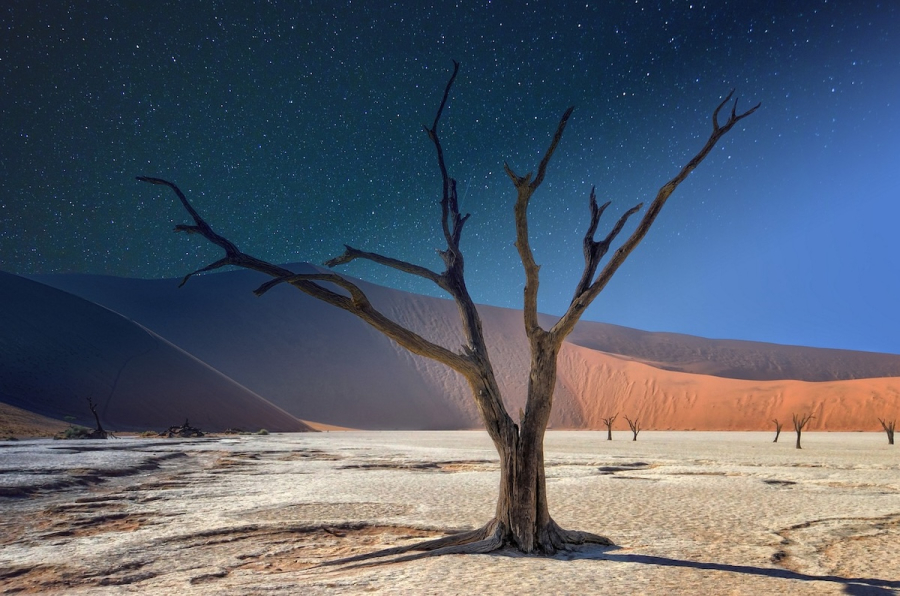
It’s hard to achieve everything we want to do in one device day, but everything would be much more difficult if we lived at an early stage in the history of the Earth. Although we take the 24-hour day for granted, days were shorter in Earth’s past.
The length of the day was shorter because the moon was closer, as reported in phys.org. said Ross Mitchell, a geophysicist at the Institute of Geology and Geophysics of the Chinese Academy of Sciences and lead author of a new study published in the journal “Natural Earth Sciences”.
{https://twitter.com/physorg_com/status/1668280028205928450}
The new study on the length of the day on Earth
“Most models of Earth’s rotation predict that the length of the day has become steadily shorter as you go back in time,” said Uwe Kircher, co-author of the study and now a researcher at Curtin University in Australia. However, slow and steady change over the course of the day, back to back, is not what Ross Mitchell and Uwe Kircher found.
How do researchers measure the length of a day in the past? In previous decades, geologists used records of special sedimentary rocks that preserved thin-scale layers in tidal mud flats. Calculate the number of sedimentary layers per month generated by tidal fluctuations, and you will know how many hours a day was in ancient times.
However, such tidal records are rare and those that do exist are often disputed. Fortunately, there is another way to estimate the length of the day. Cyclostratigraphy is a geological method that uses the rhythmic layers of sediments to reveal astronomical “Milankovitch” cycles, which reflect how changes in the Earth’s orbit and rotation affect climate.
“Two Milankovitch cycles, precession and tilt, relate to the oscillation and tilt of Earth’s axis of rotation in space. The faster rotation of the early Earth can thus be traced back to shorter cycles of tilt and tilt in the past,” explained Uwe Kircher.
Ross Mitchell and Uwe Kircher have benefited from the recent proliferation of Milankovitch records, with more than half of the data on antiquities produced in the past seven years.
“We realized it was finally time to test some kind of alternative, but entirely plausible, idea about the rotation of the ancient Earth,” said Ross Mitchell.
The sun, the moon and … oxygen
An unproven theory is that day length may have stopped at a constant value during Earth’s distant past. In addition to the oceanic tides associated with the pull of the Moon, the Earth also has solar tides associated with the heating of the atmosphere during the day.
Tides in the solar atmosphere are not as strong as tides in the lunar ocean, but this will not always be the case. When the Earth rotated faster in the past, the pull of the Moon was much weaker. In contrast to the pull of the moon, the ebb of the sun, on the contrary, pushes the earth. Thus, while the moon slows down the earth’s rotation, the sun speeds it up.
“Because of this, if in the past these two opposing forces became equal to each other, such a tidal resonance would cause the length of the Earth’s day to stop changing and remain constant for some time,” said Uwe Kircher.
Indeed, this is exactly what the new set of scientific data by Ross Mitchell and Uwe Kircher has shown.
Day length on Earth appears to have stopped its long-term increase and stabilized at about 19 hours between two billion years ago, according to Ross Mitchell. Also, the time when this occurred falls between the largest increases in oxygen. “It is surprising to think that the evolution of Earth’s rotation may have affected the evolving composition of the atmosphere,” said Timothy Lyons of the University of California, Riverside, who was not involved in the study.
Therefore, the new study supports the idea that Earth’s rise to modern oxygen levels would have to wait for days longer to allow photosynthetic bacteria to produce more oxygen each day.

“Total alcohol fanatic. Coffee junkie. Amateur twitter evangelist. Wannabe zombie enthusiast.”







More Stories
Is this what the PS5 Pro will look like? (Image)
Finally, Windows 11 24H2 update significantly boosts AMD Ryzen – Windows 11 performance
Heart Surgeon Reveals The 4 Things He ‘Totally Avoids’ In His Life